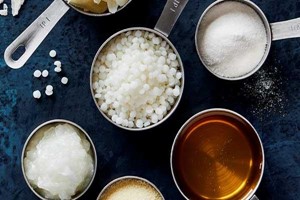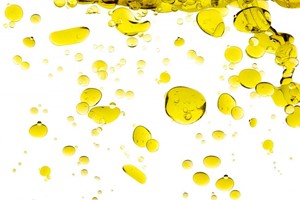When you hear the word "gelatin", what do you think? You may think "setting agent", you may think "stabilizer", or you may even think "gummy bears". But there is a whole lot more to this multi-talented ingredient than you might immediately realize.
Gelatin is a natural product and a pure protein. Extracted from collagen via a process of hydrolysis, it is a dry white powder that is free from any additives or preservatives. Classed as foodstuff, gelatin is free from E-numbers making it ideal for use in clean label products.
A valuable tool for food developers
In terms of its composition, gelatin contains 84 to 90 percent protein, 1 to 2 percent mineral salts and 8 to 15 percent water. This means that as well as improving stability and texture, when it is included in a product's recipe, gelatin boosts its nutritional value. And because it is neutral in taste and odor, it has no impact in the flavor or smell of the finished product. Additionally, gelatin has no allergenic potential - an important consideration in today's market, where "free from" is now seen as an increasingly important plus-point, even among consumers who do not have diagnosed food allergies. Having said all this, it is crucial for food manufacturers to be aware that not all gelatins are equal.


Natural variations
The word gelatin is derived from the Latin "gelatum", meaning "frozen" - and it is so-called because it swells rapidly in water then dissolves to a viscous solution when heated. After cooling, this solution then forms a gel reminiscent of ice. These actions mean that gelatin has excellent gelling and thickening properties. The hydrocolloid is able to build thermo reversible gels with different gelling powers in aqueous systems. Being a natural ingredient, however, gelatin is subject to variation. So when picking gelatin as an ingredient, food manufacturers need to reassure themselves that their chosen gelatin not only delivers consistency in terms of quality, but also in terms of physical properties. Any changes in these parameters will mean a change in the characteristics of the end product and the need for complicated and time-intensive adjustments in the production process.
A constant property profile
When it comes to making a choice, an important basic characteristic of every type of gelatin is its gelling power, or "bloom" value. The bloom value defines the gel-strength of gelatin and thus the firmness and chewiness of the final product. This is the reason why some gelatins are more suitable for some applications than others. And there are additional considerations too. Gelatin can also differ in terms of viscosity, color, clarity, foaming ability, setting and melting times, particle size and pH value. So when a manufacturer sets out to source gelatin for a particular application, the final selection must be carefully considered. If a poor choice is made, not only could there be problems during the production process, but the quality and the shelf life of the end product may also suffer. Additionally, food manufacturers need to be able to depend on the fact that their gelatin supplier always delivers exactly what they expect: gelatin with the same properties in terms of bloom value, viscosity, molecular structure, gelling time and setting/melting temperature.














